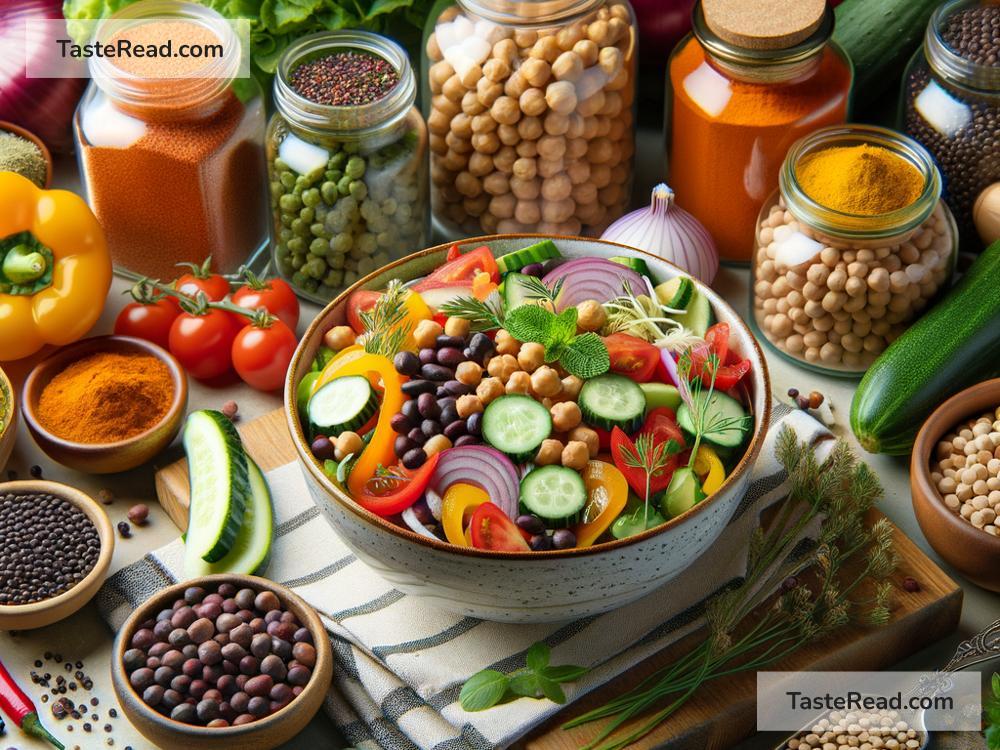How to Incorporate More Legumes into Your Diet
Are you looking for a simple and healthy way to upgrade your meals? Legumes might just be the answer! Packed with nutrients like protein, fiber, vitamins, and minerals, legumes are a superfood that can benefit your health in countless ways. What’s more, they’re affordable, versatile, and widely available. But if you’re not familiar with cooking or eating legumes, you might be wondering where to start. Don’t worry—we’ve got you covered! In this blog post, we’ll share easy and practical ways to enjoy more legumes in your diet.
What Are Legumes?
Before diving into tips, let’s clarify what legumes are. Legumes are a plant group that includes beans, lentils, peas, and chickpeas. Some common examples are:
- Beans: Black beans, kidney beans, pinto beans, navy beans
- Lentils: Brown lentils, red lentils, green lentils
- Peas: Green peas, split peas
- Chickpeas: Also called garbanzo beans
These tiny powerhouses have been staples in diets worldwide for thousands of years—and for good reason! Legumes are filling and nutritious, and they pair well with foods like rice, vegetables, and meats.
Why Should You Eat More Legumes?
Why should legumes earn a spot on your plate? Here are some benefits:
- Rich in Nutrients: Legumes are a great source of protein, especially for vegetarians and vegans. They’re also high in fiber, which helps with digestion and keeps you fuller for longer.
- Good for Your Heart: Eating legumes regularly can lower cholesterol levels and reduce the risk of heart disease.
- Affordable: Legumes are budget-friendly, making them perfect for healthy eating on a tight budget.
- Versatile: Whether in soups, salads, or snacks, legumes are easy to include in countless recipes.
How to Incorporate More Legumes into Your Diet
It’s easy to include legumes in your daily meals—and you don’t need to be a master chef to do it! Here are eight simple and practical ways.
1. Add Legumes to Soups and Stews
One of the easiest ways to enjoy legumes is by tossing them into soups or stews. For example, add lentils to vegetable soups or throw some kidney beans into a meat stew. Legumes soak up flavors from other ingredients, making them delicious and satisfying.
2. Make a Salad with Beans or Chickpeas
Want to level up your salads? Add cooked black beans, chickpeas, or lentils for extra texture and protein. You can also create a bean salad with just legumes, chopped vegetables, olive oil, and lemon juice. It’s refreshing and perfect for warm days!
3. Replace Meat with Legumes in Your Meals
Legumes are a fantastic substitute for meat, especially in dishes like tacos, chili, or burgers. Swap ground beef for lentils or mash black beans to make patties. This is a good option for vegetarians—or anyone who wants to eat less meat.
4. Make Homemade Hummus with Chickpeas
Who doesn’t love hummus? It’s a creamy spread made from blended chickpeas, tahini (sesame paste), olive oil, lemon juice, and garlic. Hummus is perfect for dipping veggies or spreading on sandwiches. Once you make it, it’s hard to go back to store-bought hummus!
5. Use Legumes in Tacos or Burritos
Legumes are stars in Mexican-inspired dishes. Fill your tacos or burritos with black beans, pinto beans, or refried beans. Combine them with classic ingredients like lettuce, salsa, avocado, and cheese for a filling and flavorful meal.
6. Try Legume-Based Pasta Alternatives
Lentil and chickpea pasta are available in most grocery stores. These pasta alternatives are gluten-free and high in protein. Use them the same way you use regular pasta—top with marinara sauce, pesto, or your favorite toppings.
7. Sneak Legumes into Smoothies and Baking
This tip might surprise you, but legumes blend well into smoothies and baked goods like muffins. You can use cooked white beans or chickpeas to add a creamy texture without changing the flavor. It’s a sneaky way to boost nutrition in treats!
8. Snack on Roasted Chickpeas or Edamame
Looking for a healthy snack? Roast chickpeas with olive oil and spices for a crunchy treat. Or enjoy steamed edamame (young soybeans) sprinkled with salt. Both options are simple, tasty, and full of plant-based protein.
Tips for Cooking and Storing Legumes
Cooking legumes is easy once you practice a bit. Here’s what you need to know:
- Dried vs. Canned: You can buy legumes dried or canned. Canned is convenient, while dried is cheaper but requires soaking and cooking.
- Soaking Dried Legumes: Soak dried beans overnight to reduce cooking time. Lentils and split peas don’t need soaking.
- Rinse Canned Legumes: Always rinse canned legumes to remove excess sodium.
- Cook in Bulk: Cook a big batch of legumes and store leftovers in the fridge or freezer. This saves time during busy weeks!
Conclusion
Incorporating legumes into your diet is easier than you might think! Whether you add them to soups, salads, or snacks, legumes make meals healthier and tastier. Plus, they’re affordable and incredibly versatile. By including more legumes in your meals, you’ll enjoy their many health benefits—and discover new, exciting recipes along the way.
So why not try one of the ideas above today? Your taste buds—and body—will thank you!


